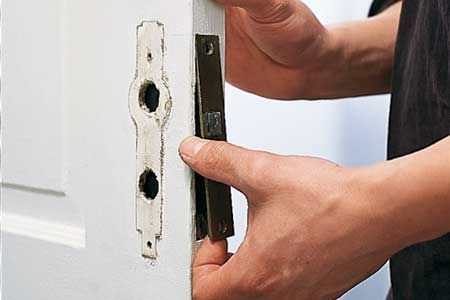
TLC for Old Locks
Like anything mechanical, the mortise locks found in old doors collect dust and dirt and eventually stop working as smoothly as they once did. When that happens, it’s time to clean and lubricate the moving parts, something best done with the lock out of the door.
1. Remove the lock. Loosen the set screw on the knob, and take the knobs and spindle off the door. Then back out the two screws holding the latch plate to the edge of the door, and remove the lock from its mortise. (If the plate has been painted over, first cut around the perimeter of the plate with a utility knife, and dig the paint out of the screw slots.) Set all the parts aside in a safe place, such as a plastic zip-top bag.
2. Open the lock case. Lay it on a table, and back out the screw holding the cover plate. Put the screw and plate in the plastic bag.
3. Clean and lubricate. Blow out the dust and dirt. A can of pressurized air, the kind photographers use to clean their equipment, comes in handy here. Lubricate all the spots where metal rubs against metal. The dry graphite spray used by locksmiths to loosen frozen locks is ideal because it doesn’t hold dirt the way an oily lubricant would.
To reinstall, follow the steps above in reverse: Screw on the cover plate, insert the case into the door’s mortise, reattach the latch plate to the edge of the door, and put back the knobs and spindle. Then enjoy how smoothly your lock operates. —Thomas Baker
Where to find it:
TLC for Old Locks : Graphite lock fluid:
Lock-Ease, American Grease Stick Company,
Muskegon, MI
800–253–0430
www.agscompany.com

